
There are many factors involved in producing the perfect tomato. From fertilizing at the right time to battling pests and diseases, there is a list of things to consider. And, depending on your type of tomato and the part of the season you’re in, you can add pruning to that list too.
Pruning is a debated topic amongst tomato gardeners, with staunch defenders on either side. Ultimately, once you’ve weighed up the benefits and the performance of your plants, the choice is up to you.
Is Pruning Necessary?
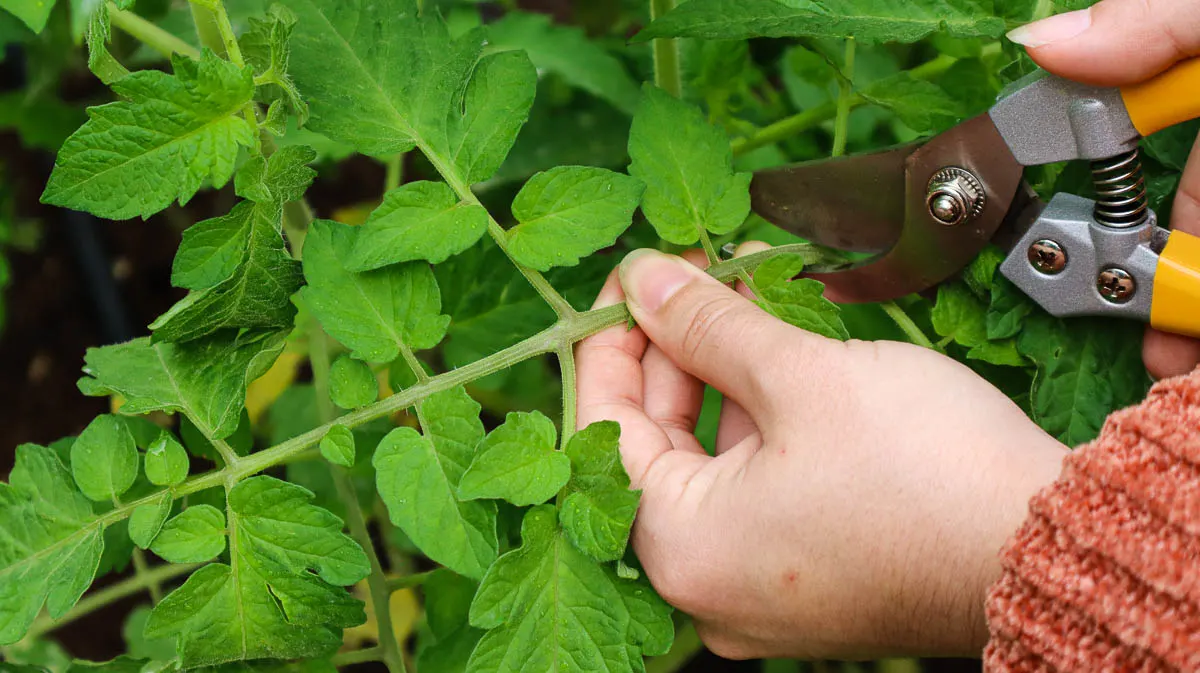
In short, no. Pruning is not essential to the health of your tomato plants. Plenty of gardeners grow healthy tomatoes every year without pruning at all.
However, that doesn’t mean there are no reasons to prune whatsoever.
For starters, pruning can make your plants healthier. Removing damaged branches makes the plant less susceptible to pests and diseases. Trimming areas that touch the floor (or at least tying them to a stake) will prevent the transfer of soil-borne diseases too. And, pruning dense areas of leaf growth improves airflow around the plant, again preventing fungal disease.
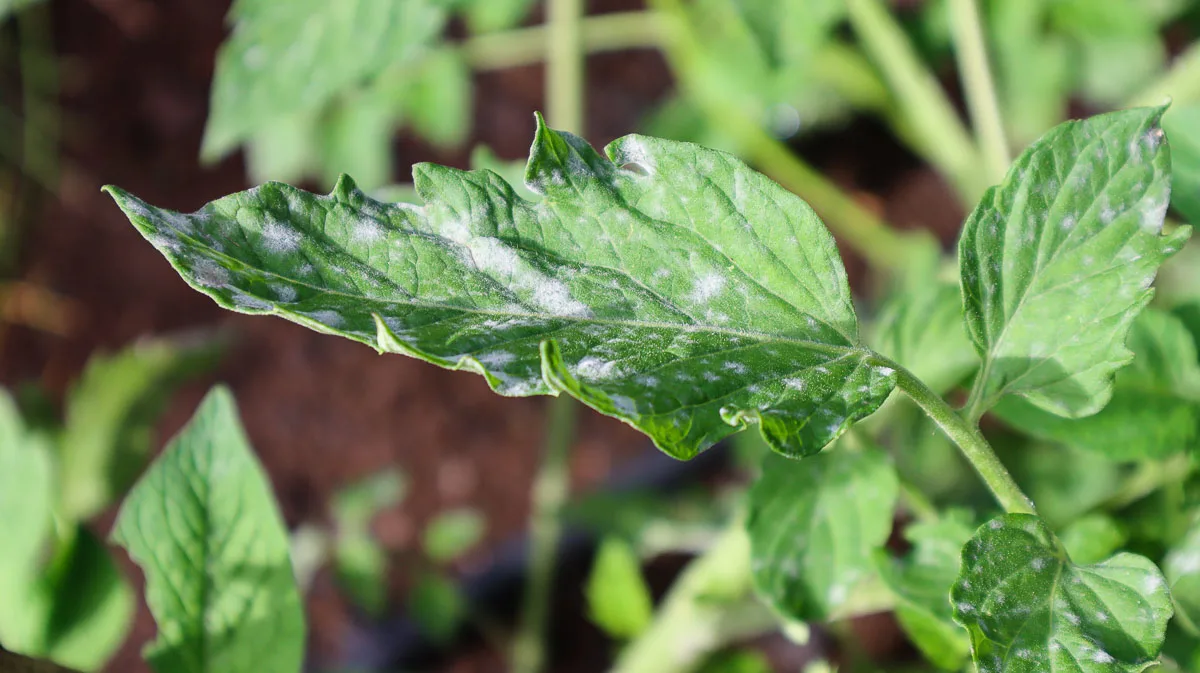
As tomato plants are incredibly prone to a wide range of pests and diseases, any task that prevents these problems should be a top priority – including pruning.
But pruning is not only helpful for health. It can also improve your yields.
Pruning excess growth and underperforming stems will direct the precious energy the plant has into developing fruits. Pruning at the right time can also help the last tomatoes of the season grow and ripen to complete your harvest and end the season on a good note.
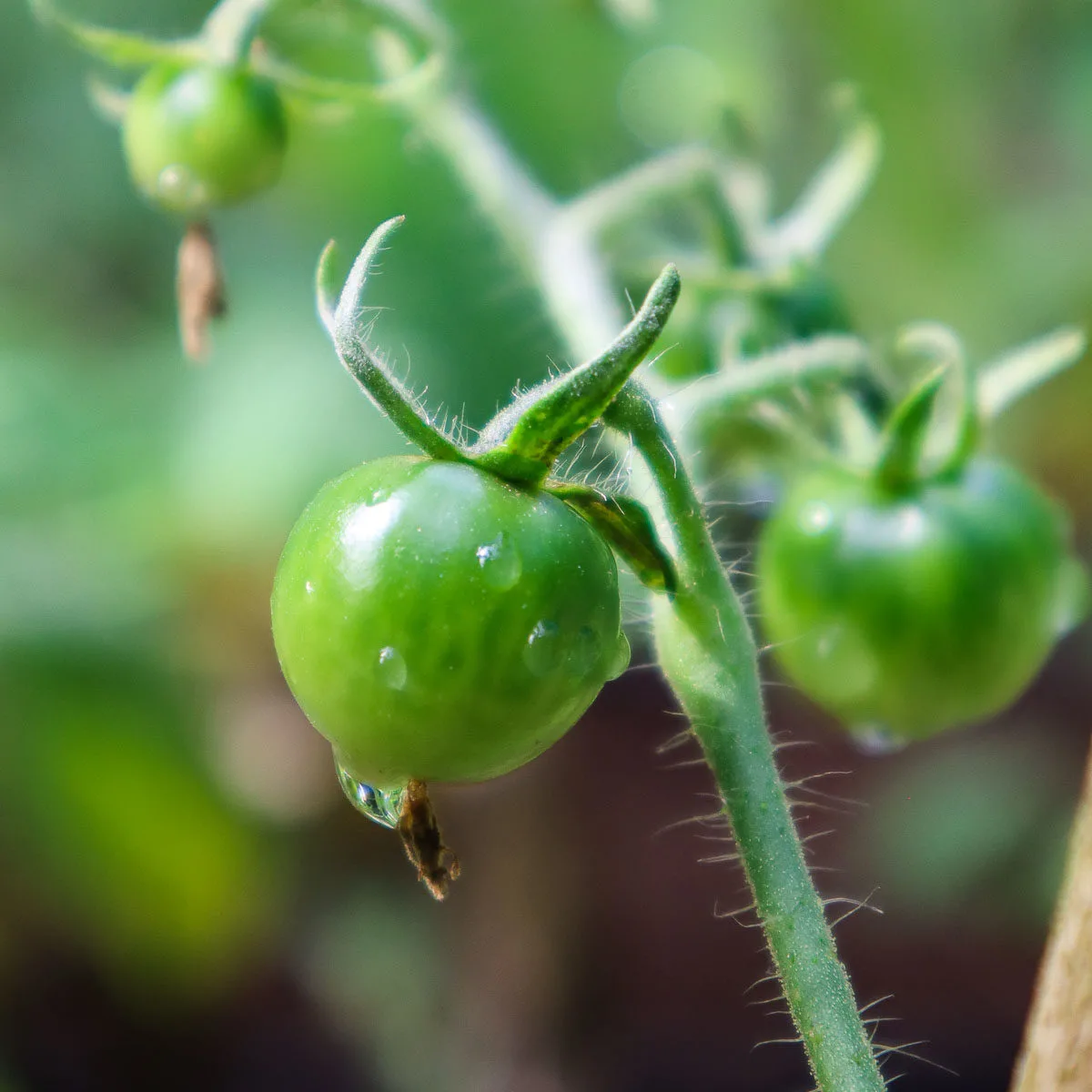
For busy gardeners that want a maintenance-free harvest, you can skip the occasional prune. But, if you want the healthiest, strongest tomatoes possible, pruning is essential.
Determinate Vs Indeterminate Tomato Plants
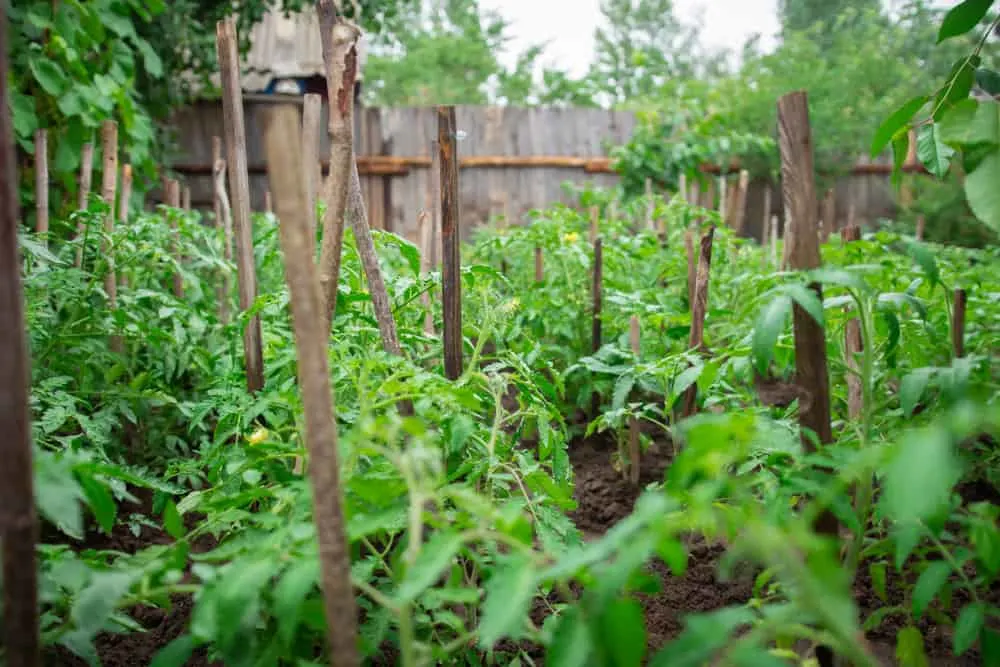
Before we get into the technicalities, it’s important to understand the difference between determinate and indeterminate tomatoes.
Determinate tomatoes are those that grow to a predetermined height with fruits that ripen all at the same time. They generally have shorter growing seasons than indeterminate tomatoes that will continue growing until cold weather sets in and kills the plant. Indeterminate tomatoes can reach several feet tall, while determinate tomatoes will only grow between 4-5 feet generally, depending on the variety.
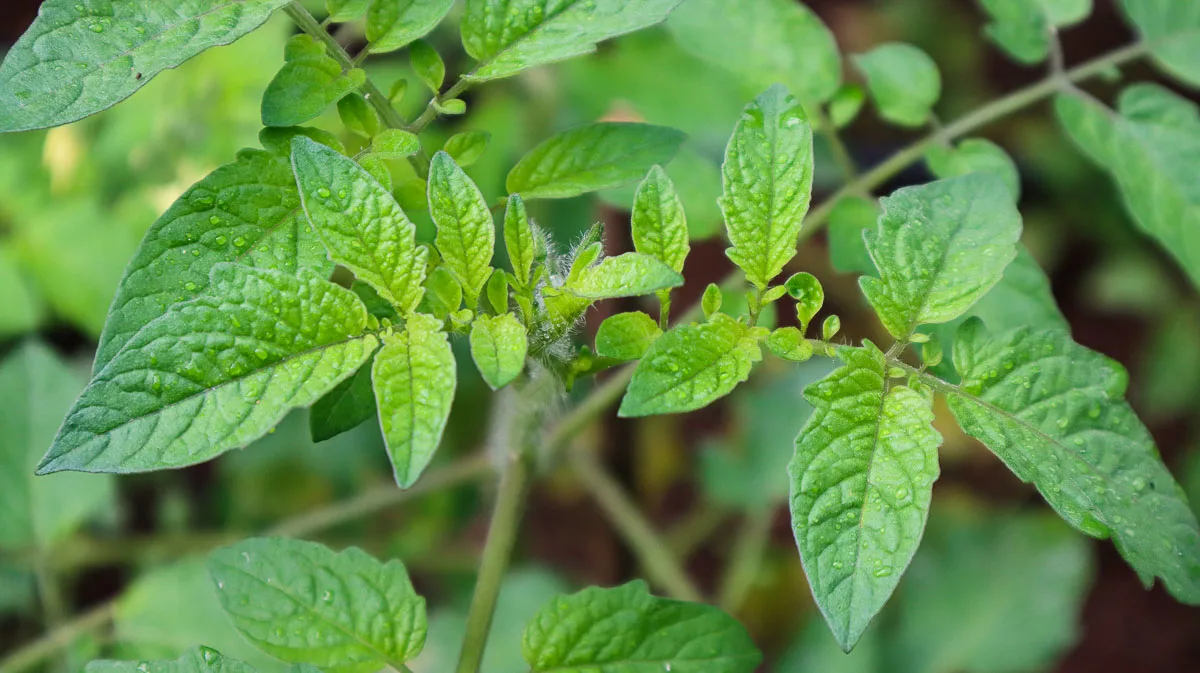
Common determinate tomato varieties include:
- Roma
- Plum Regal
- Bush Beefsteak
- Heinz
The most popular tomato varieties are indeterminate. This includes:
- Beefsteak
- Cherokee Purple
- Early Girl
- Sungold
Make sure you know what type of tomato you are dealing with before you start as pruning techniques differ.
When To Prune
Some plants, particularly shrubs and trees, only need to be pruned once per season (or once per year). That is not the case for tomatoes. As these fast-growing plants continue to put out suckers throughout the season, pruning tomatoes is a continual task.
However, there are times in the season when you need to focus on pruning, and other times when you can skip a week or two without trouble.
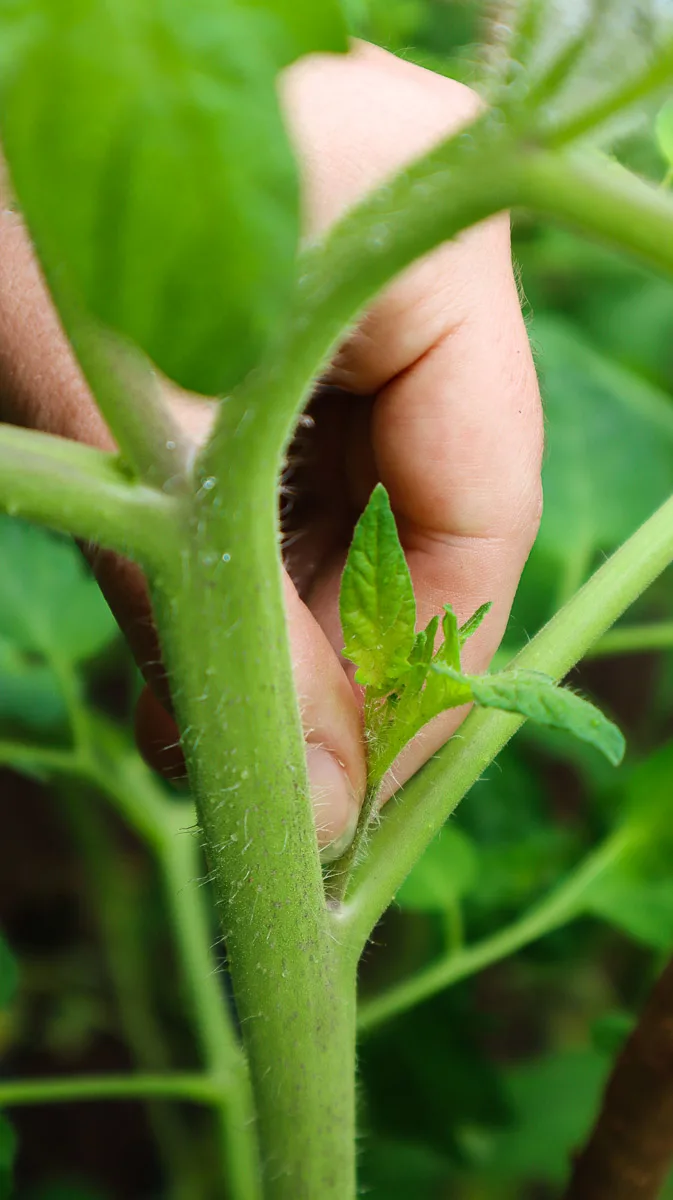
Early in the season, as your plant develops but before it flowers, a quick prune is needed to prevent the growth from becoming too dense.
The same can be said for the end of the season, when a heavy prune is useful for getting the rest of the flowers to set fruit before the first frost.
Throughout the season, grab your shears every few times you step out into the garden to check the plants and quickly prune them here and there as needed.
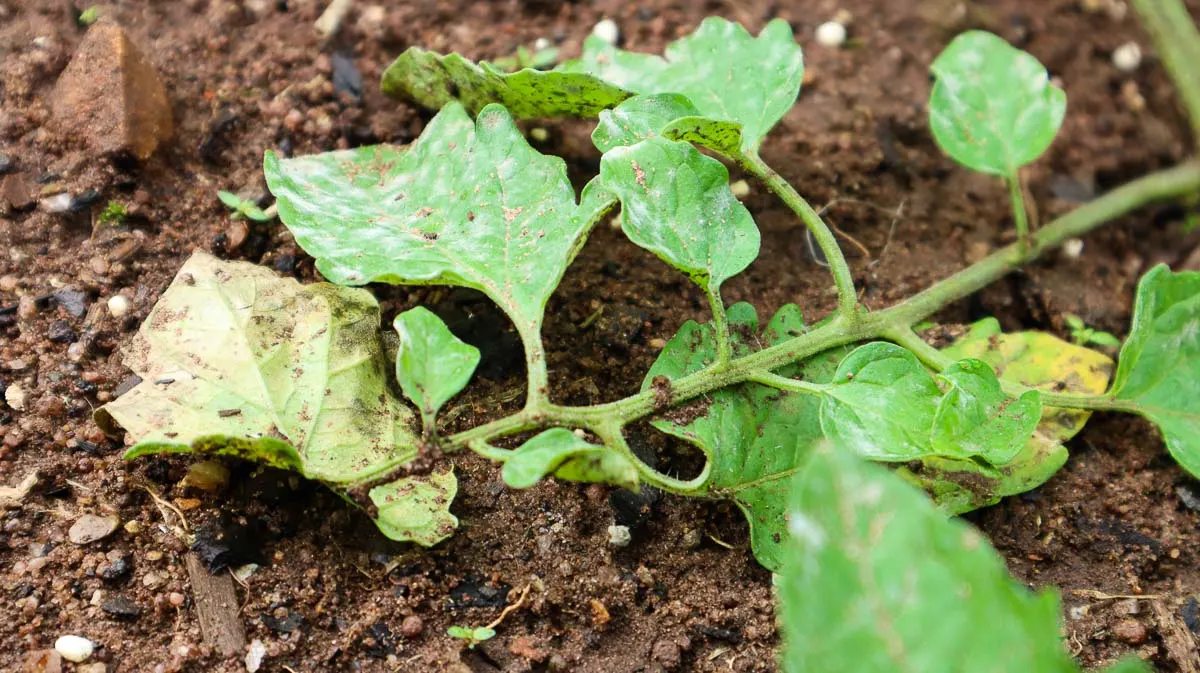
3 Times You Should Prune Determinate Tomatoes
Between determinate and indeterminate tomatoes, determinate varieties generally don’t require heavy pruning, or any pruning at all. They have a shorter season and since they grow to a predetermined height, they don’t need to be trimmed to control their growth.
A basic trim to direct the plant’s energy toward fruit development and keep pests and diseases at bay is all that is required for these varieties.
Here’s how to do it.
1. Remove Suckers Below The First Flower Bud
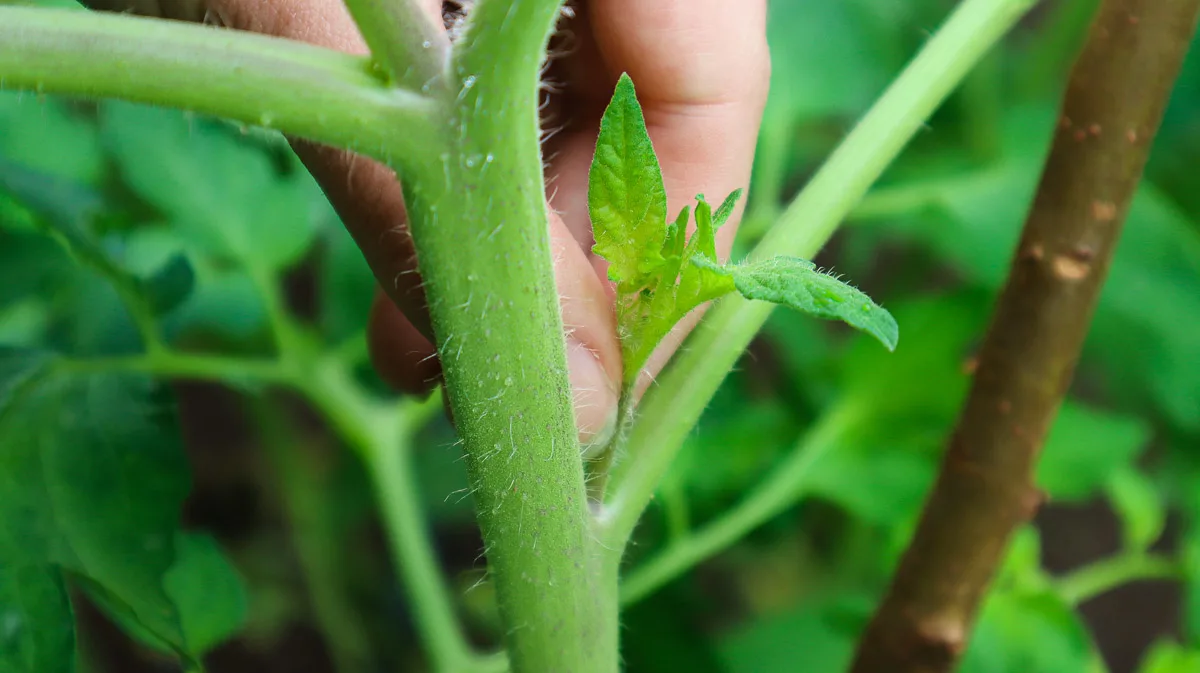
Removing suckers is the first step in pruning tomato plants. When it comes to determinate varieties, which suckers you prune are important.
But first, for those who don’t know – what are suckers? They are the stems emerging from the axel between the main stem and a horizontal stem, sitting at a 45° angle. If left alone, they will turn into regular branches that also have the potential to produce fruit.
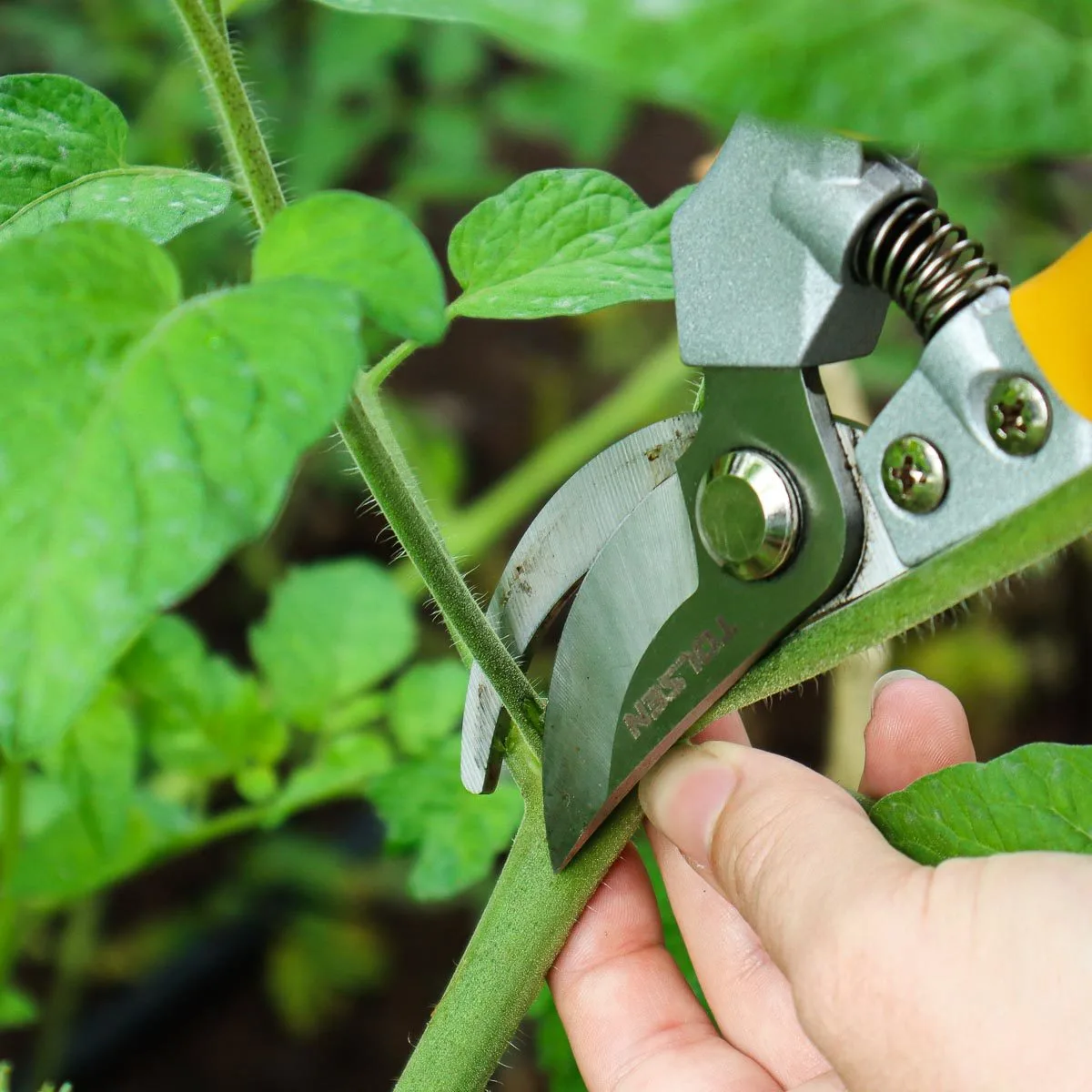
Since determinate tomatoes don’t grow as tall as other types and have a short growing season, removing suckers to increase airflow is not necessary. You only need to remove suckers below the first flower bud as these will sap energy from the plant. Removing any suckers above the bud will only lessen your harvest.
Early suckers can simply be pinched off with your fingers. Thicker stems need to be cut with pruning shears to ensure the wound heals as quickly as possible.
2. Trim Leaves Hitting The Soil
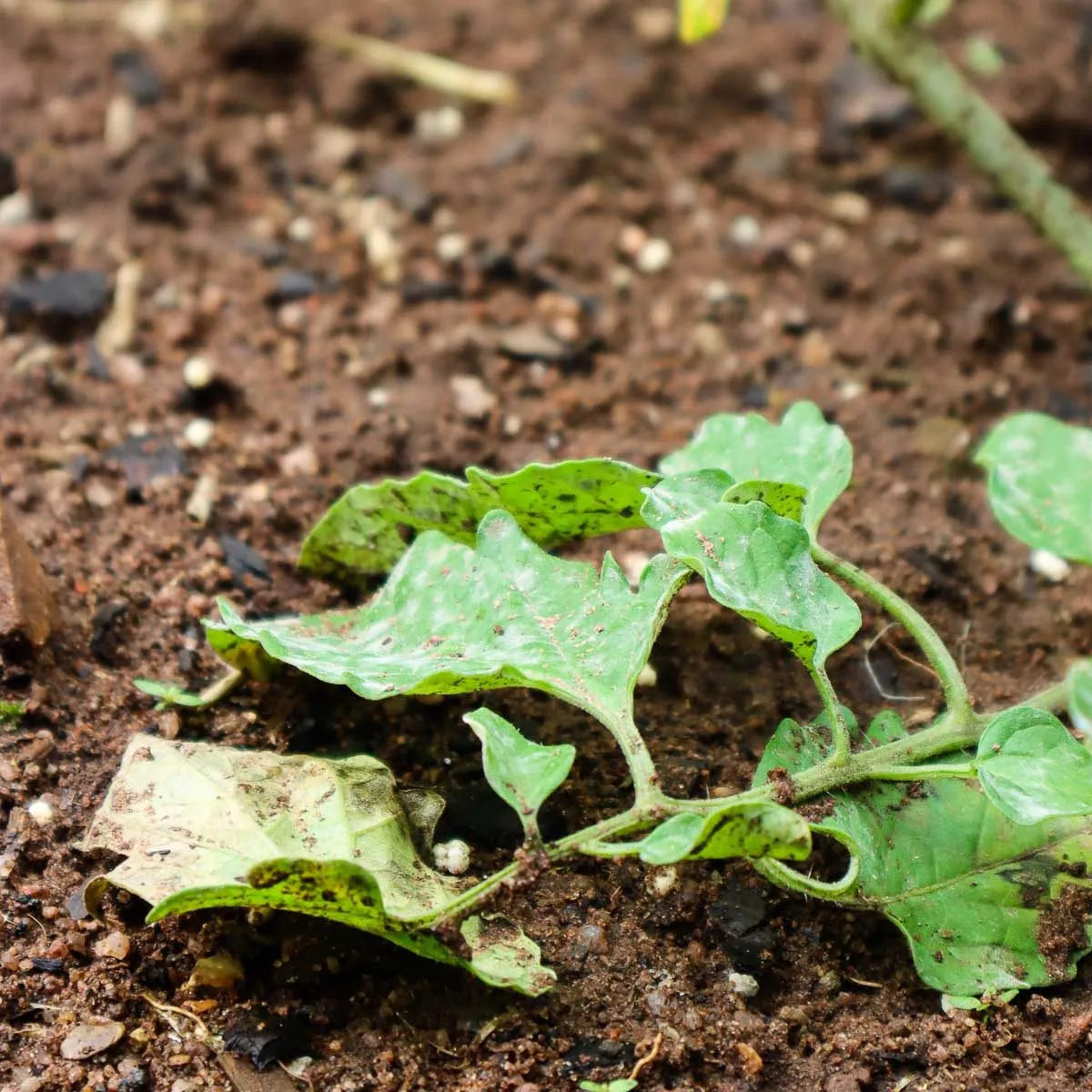
While looking at the base of the plant, keep an eye out for any stems that are hitting the soil. These can attract soil-borne pests or begin to rot from the moisture on the top layer of soil.
Cut them off at the base of the stem or, if they haven’t been damaged already, tie them to your support if there are few leaves on the plant overall.
3. Remove Any Diseased Or Damaged Stems
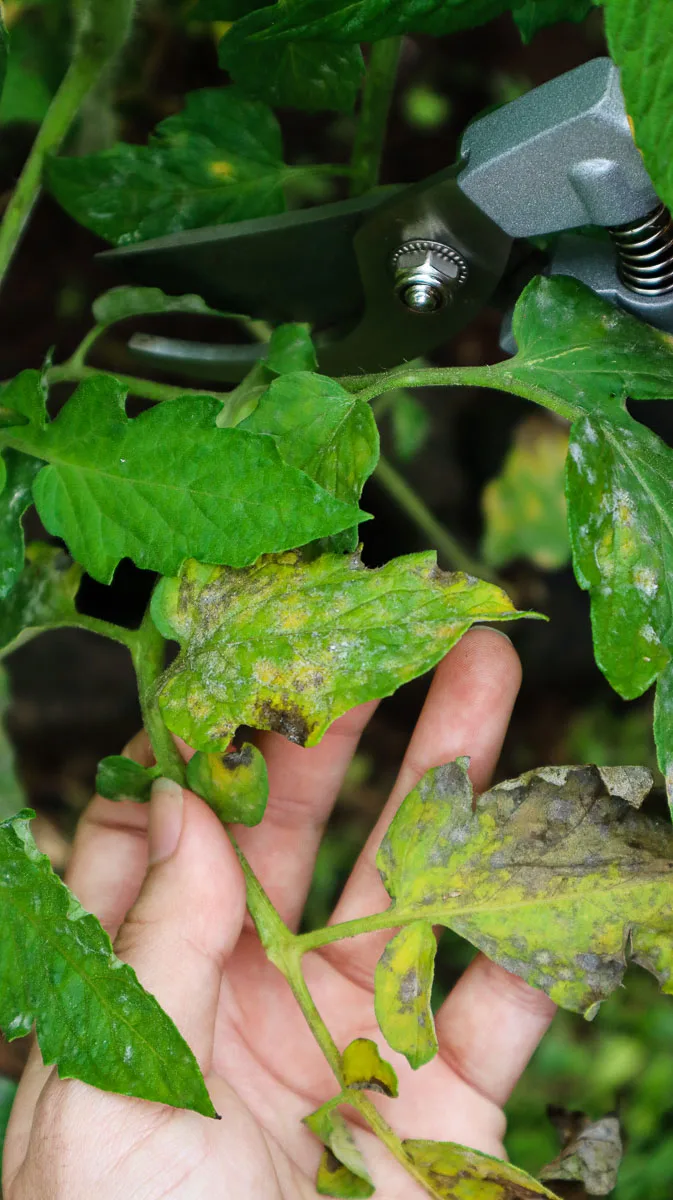
Step back from the plant and check for any overall signs of disease or damage. Yellowing leaves, dark spots, or white spots all indicate health problems that need to be dealt with by pruning.
Trim off the affected areas and clean your shears thoroughly after use to prevent spreading the disease to any of your other plants.
5 Times You Should Prune Indeterminate Tomatoes
A casual trim is enough for determinate tomatoes, but the process is more in-depth for indeterminate tomatoes. As pruning is up to the gardener, you can choose which processes you do and which you leave out. For example, some swear by pruning suckers, while others believe it is not a necessity.
These are the many parts of pruning indeterminate tomatoes. Look at the performance of your tomatoes and decide which are important for you.
1. Remove The Suckers
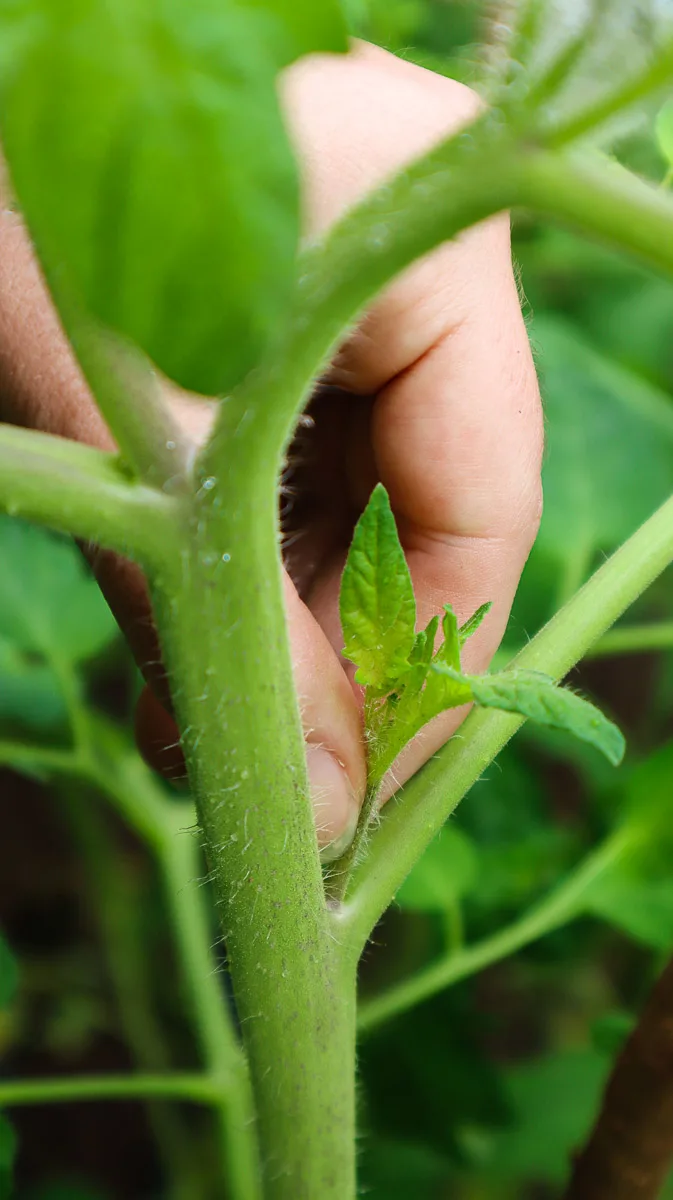
Indeterminate tomatoes continue growing throughout the season, putting out new suckers frequently. To control the density and direct energy toward fruit production, it’s best to remove most of these as soon as they appear. You can choose a few to develop more stems, but don’t keep too many on the plant as this will compromise your harvest.
As with determinate tomatoes, simply remove these suckers with your fingers or larger ones with a pair of pruning shears.
2. Remove Damaged Or Yellowing Branches
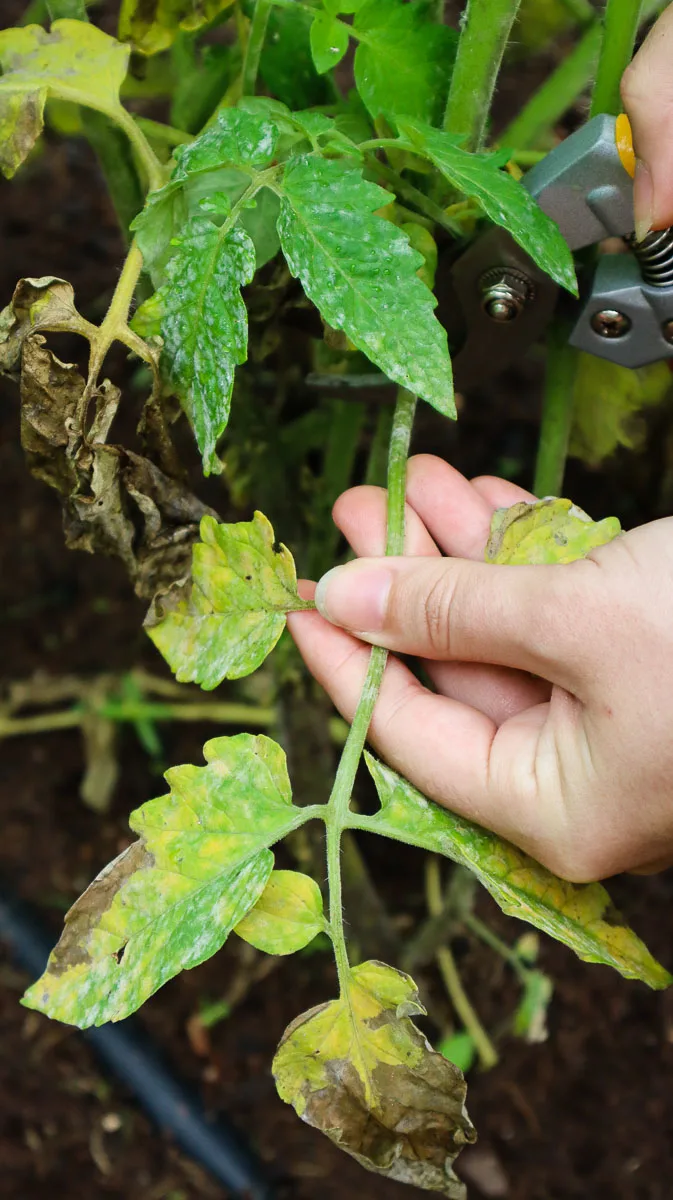
Underperforming, damaged or diseased branches sap energy from your tomatoes that could go into producing fruit. These areas are also more vulnerable to pest and disease damage, so it’s important to remove them as soon as they appear.
If you’re removing diseased stems, keep a close eye on the plant for the next few days or weeks to watch for signs of spread and deal with them before they take over the entire patch.
3. Trim Or Stake Low-Hanging Branches
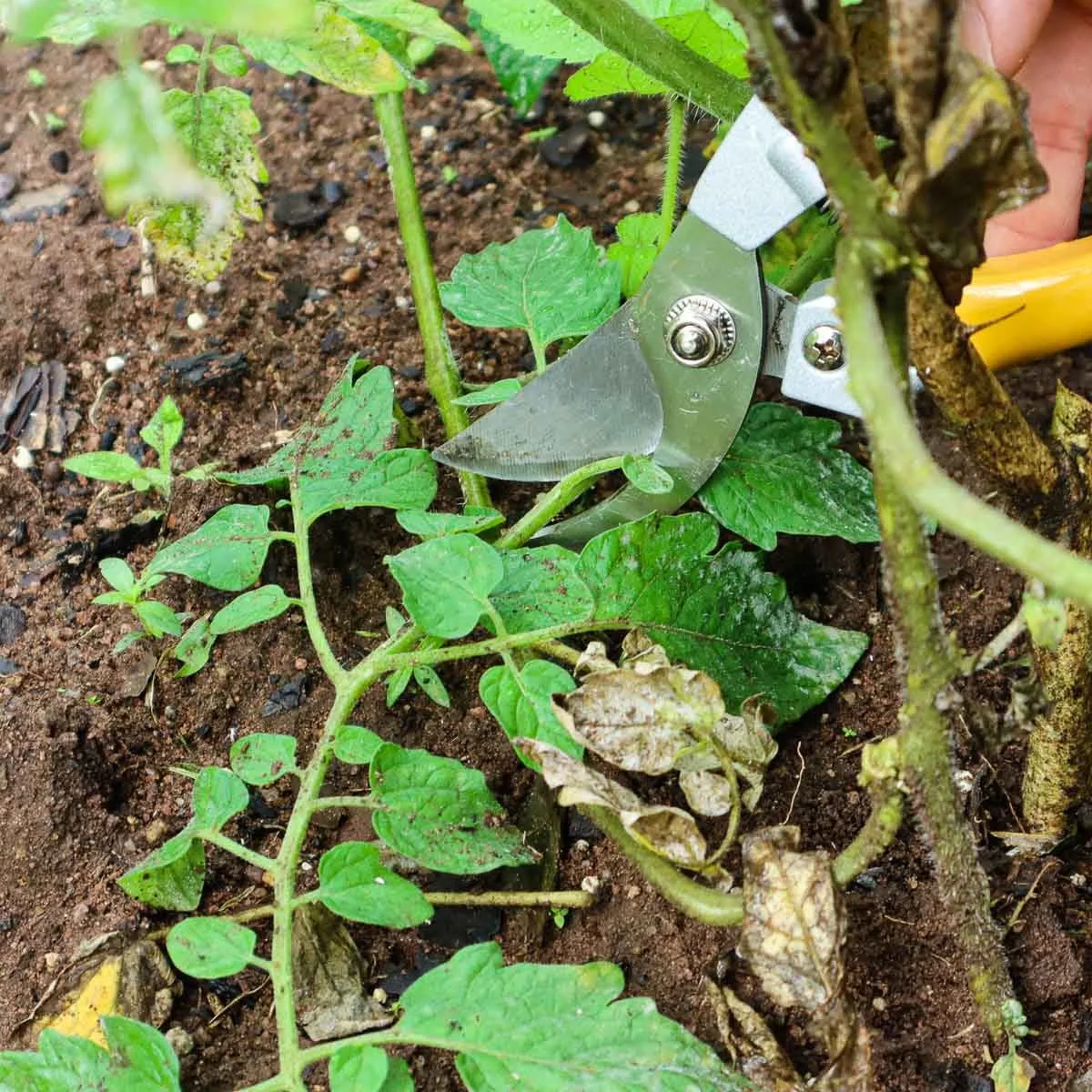
Indeterminate tomatoes should be supported by cages, stakes, or the many other options available to tomato gardeners. But, no matter which method you choose, there are likely to be a few stragglers that bend towards the soil, again attracting pests and diseases and encouraging rot. These low-hanging branches also don’t get much sun and so aren’t much benefit to the plant overall.
Trim these back early on to stop issues from spreading to the branches higher up.
4. Prune Dense Leaf Growth To Improve Airflow
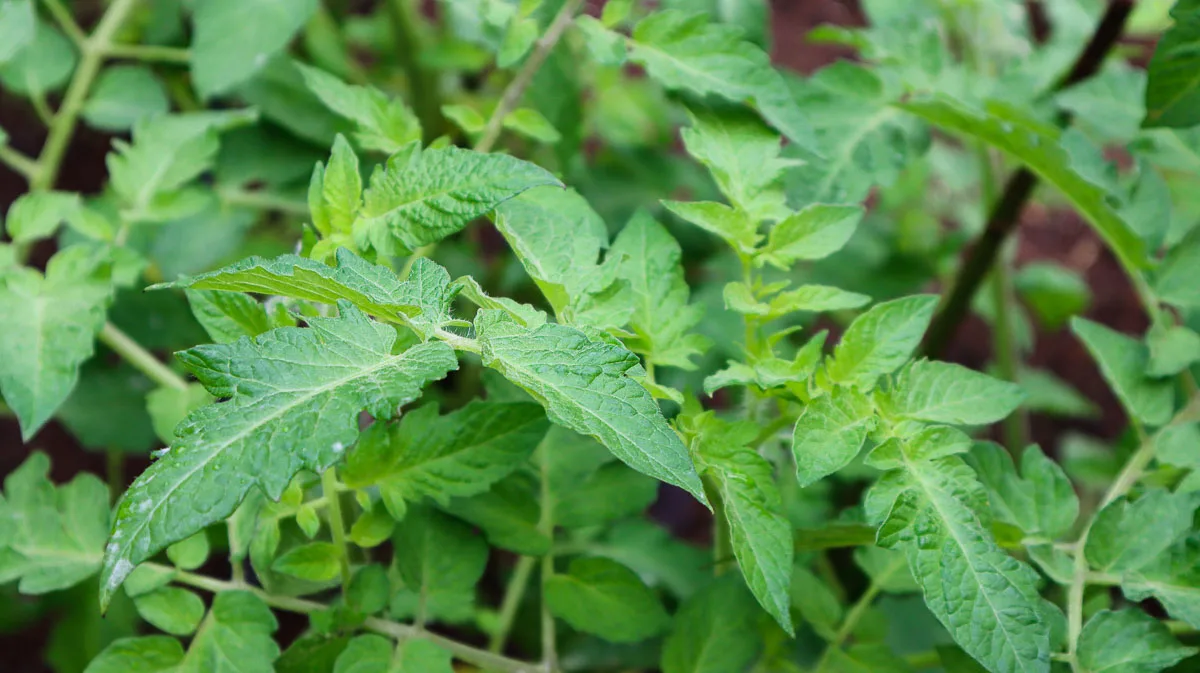
In the right conditions, tomato growth can be rapid and at times, unruly. Growth may seem like a good thing, but too much of it can end up negatively impacting your harvest.
The first concern is airflow. As tomatoes are prone to fungal disease, especially in humid environments, dense areas of leaf growth are not welcomed. Pruning away some leaves and stems (but not too many) will increase airflow around the leaves, limiting the risk of fungal growth.
Dense growth also creates more shade on the lower parts of the plant that can prevent fruit set. Sun needs to reach the lower leaves and blooms to produce and ripen the fruits.
5. Top The Plant
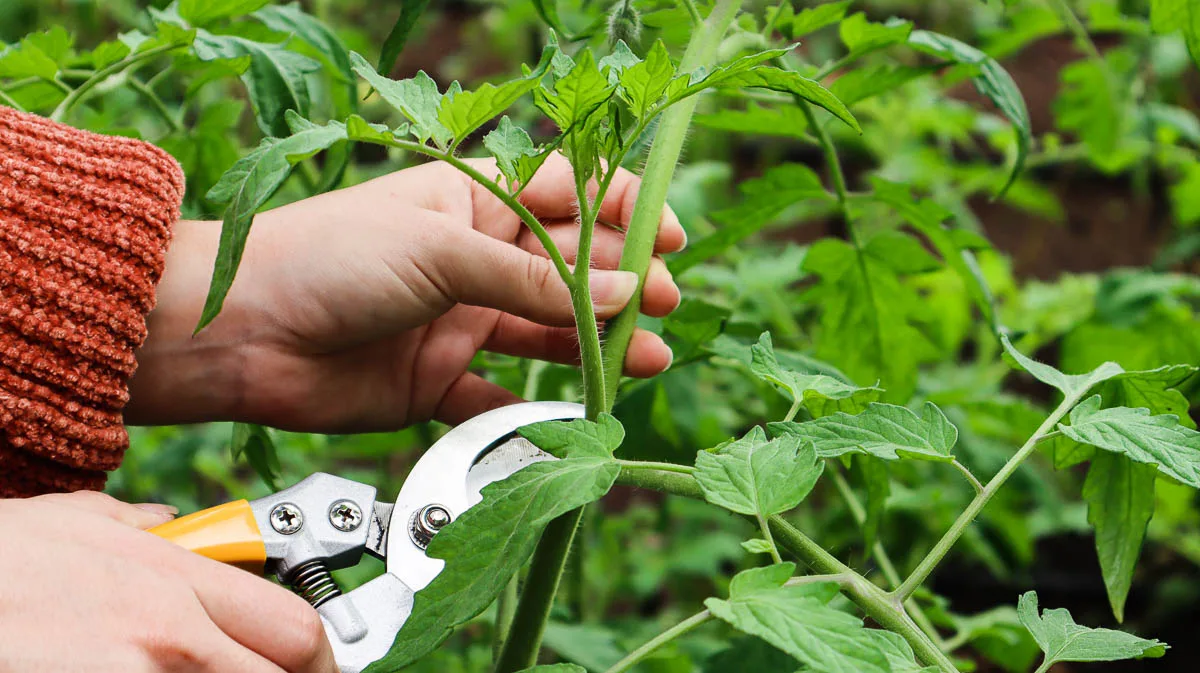
Towards the end of the season, there will likely be a few extra blooms and some green tomatoes on your plant. With the first frost of fall looming, you need to do all you can to get the most fruits possible.
One of the tricks you can use to do this is topping your plant – trimming the main stem. This halts stem and leaf growth, directing all the energy to producing and ripening the last fruits of the season.
For a detailed guide on how to do this, you can follow our tutorial here.
Pruning is not a number one priority for every tomato gardener, and there’s nothing wrong with that. But with so many benefits, it’s definitely a practice worth considering.
